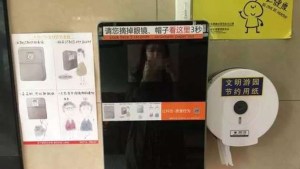There have been more than a few news reports from certain destinations in China that government officials have begun to install facial recognition technology at popular (and busy) public places—such as Beijing’s Temple of Heaven or the Baotu Spring Park in Jinan, the capital of Shandong province, where the technology is being used to regulate the amount of toilet paper that a visitor to these attractions can use. And if a patron tries to make a repeat visit to the toilet paper machine too quickly, he or she will find that the paper supply is cut off.
Here is how it works. A visitor walks up to the machine and has his or her face scanned, and then the dispenser gives them about 27 inches of toilet paper. In ordered to receive another length of paper, users have to wait nine minutes and have another facial scan.
First appearing last year, this technology has been initially aimed at popular tourist destinations in an effort to keep the bathrooms as clean and efficient as possible. The idea is to restrict toilet people to people who may be coming back too frequently, ensuring that a sufficient amount remains to take care of the high traffic in these tourist areas.
“Today in China, people are highly enthusiastic about tourism, and we have entered a new era of public tourism,” Zhan Dongmei, a researcher with the China Tourism Academy, told a Russian media outlet. “The expectation of the public for the toilet is becoming higher.”
As pointed out in a CBC report, the cleanliness of bathrooms is taken into account when the China National Tourism Administration gives out ratings for attractions. That has put cleanliness as a top priority at places like Beijing’s Temple of Heaven, where officials have tried to cut down on the number of visitors who take wads of toilet paper for personal use later on.
While news accounts of the development seem to have been written with a chuckle-inducing intent, they have also prompted some alarm over the spreading use of facial recognition in China, where government officials and businesses officials have deployed the technology widely.
























